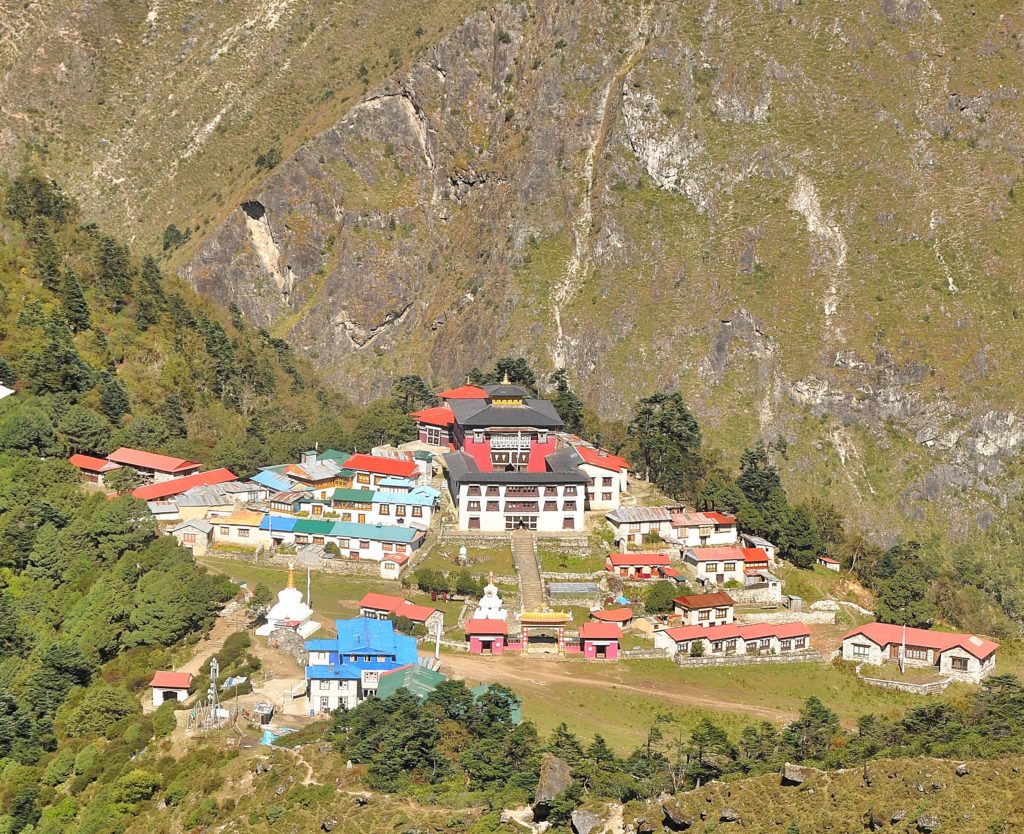
With eight of the fourteenth tallest mountains located in the country, trekking in Nepal is certainly the most famous adventure activity to do. Blessed with a gorgeous Himalayan tapestry towards the north, Nepal is a beautiful destination that is visited by thousands of tourists every year. As such, tourism is an important aspect of the country’s revenue generation. Nepal has a diverse topography that is brimming with its own beautiful elements. With a perfect amalgamation of nature and culture, Nepal is a country that excels in harmonizing its ingredients to present an experience that is exotic and one-of-its-kind. Rich in history and religious sites and settings, Nepal’s art, architecture, and cultural semblance is truly the most beautiful on the planet. With fertile plains in the south, isolated valleys situated among chartreuse hills lying snugly between the southern and northern regions and cerulean mountain peaks in the north, Nepal’s geographical features also result in a variety of biomes, flora and fauna life. Wildlife heterogeneity in the country is also a major aspect that plays an important role in enhancing the beauty. With melting mountain snow and thawing glaciers, the country is also rich in water resources with the ebullient flow of rivers, sapphire mountain lakes and another myriad of water-bodies. A little heaven-like destination, Nepal certainly does not lack in beautiful regions that travelers can visit experience journeys that are filled with the best countenance and demeanors of unique traditions, natural terrains, and wonderful mountainous landscapes.
Here are top 3 best trekking destinations in Nepal.
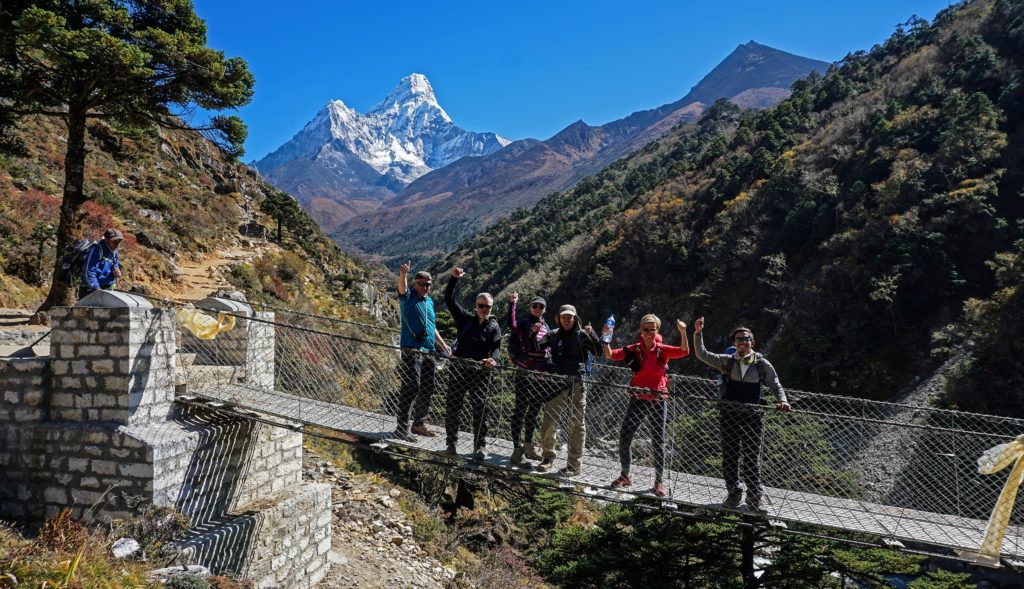
The Everest Region:
The Everest region, also known as the Khumbu region, is one of the top destinations for trekking in Nepal. Lying on northeastern Nepal, Khumbu is a part of the Solukhumbu district, which in turn is a part of the Sagarmatha Zone. The Everest region is famous as the Sherpa settlement of the Himalaya and includes popular towns like Namche Bazaar as well as villages of Thame, Khumjung, Pangboche, and Kunde. With elevations ranging from 3,300 meters to the 8,848-meter summit of Mount Everest, the Khumbu region includes both the Sagarmatha National Park and the Sagarmatha National Park Buffer Zone between Lukla and Monju. The region also hosts mountain peaks like Ama Dablam, Lhotse, Nuptse, Cho Oyu, Changtse and many others. The Everest region can also be considered as one of the best regions to travel in the entire planet when its natural elements and cultural significance are taken into account. One of the most famous trekking journeys on Earth- the Everest Base Camp Trek is done on the Khumbu region.
Here are some highlights of Everest Region trekking-
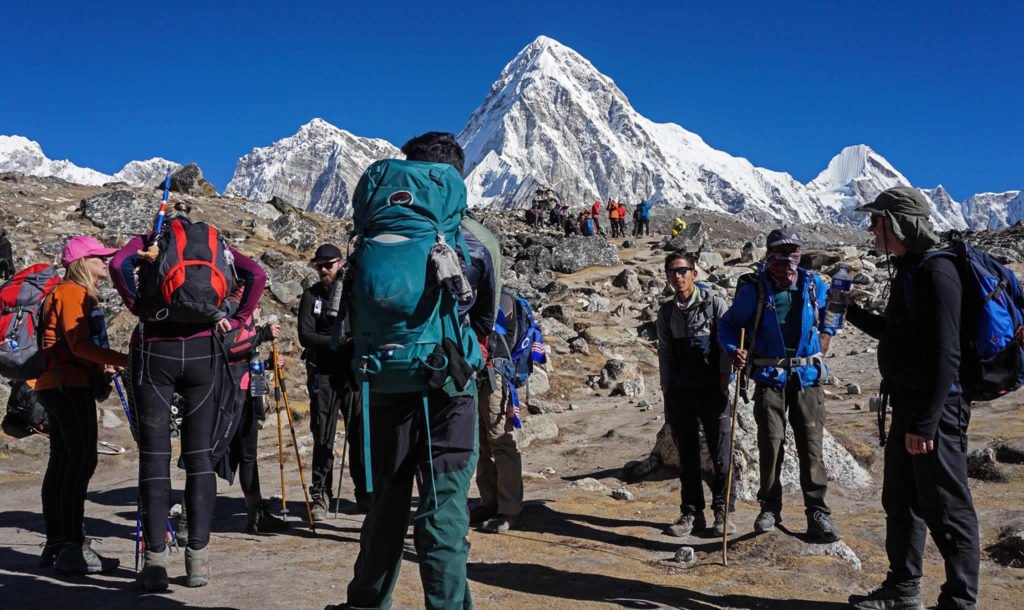
Sagarmatha National Park
Established in 1976, Sagarmatha National Park became the country's first national park that was inscribed as a Natural World Heritage Site in 1979. Containing the upper catchment areas of the Dudh Koshi River, Bhotekoshi River Basin and the Gokyo Lakes, Sagarmatha National Park is largely composed of rugged terrain and gorges of the high Himalayas, ranging from 2,845 m (9,334 ft) at Monjo to the top of the world's highest peak Sagarmatha (Mt. Everest) at 8,848 m (29,029 ft) above sea level. Forests of lush birch, juniper, blue pines, firs, bamboo, and rhododendron grow abundantly in the park and are habitat to many endangered species of animals. The forests provide habitat to at least 118 species of birds and are also home to a number of rare mammal species, including musk deer, snow leopard, Himalayan black bear, and red panda. Himalayan Thars, Langur monkeys, martens, and Himalayan wolves are also found in the park.
Dingboche Valley
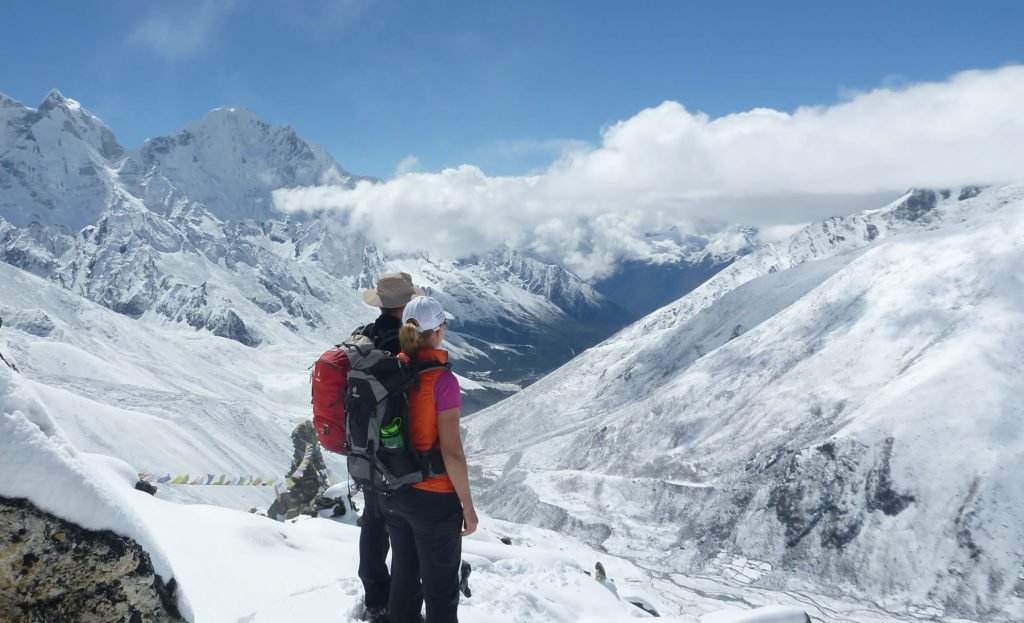
A Sherpa village in the Khumbu region lying within the Chhukung Valley, Dingboche a popular stop for trekkers and climbers headed to Mount Everest Base Camp, Ama Dablam or the Imja Tse. Dingboche is also a village most trekkers use for acclimatization. Relying heavily on tourist, Dingboche has many lodges and tenting areas. The Imja River flows directly east of the village. One of the characteristics of Dingboche is the kilometers of stone walls, built using the stones of different sizes that cover the entire Valley of Imja. These stones are removed in order to plow the soil and end up being piled one over the other, creating kilometers of continuous stone walls. Dingboche is also known as the “Summer Valley” because it is less affected by the icy winds that descend through the Valley of Khumbu and receives more sun.
Mount Everest

Also known in Nepal as Sagarmatha, Mount Everest is the Earth's highest mountain. Trekking to the base camp of Mount Everest is attempted and one by thousands of trekkers every year and the mountain is a main attraction of the region. The peak of Mount Everest extends into the upper troposphere and penetrates the stratosphere. First climbed all the way to its summit by Sir Edmund Hillary and Tenzing Norgay Sherpa in 1953, Mount Everest has since then become a destination that is on the list of most travelers. A part of the Mahalangur Range, Mount Everest has two main climbing routes, one approaching the summit from the southeast in Nepal (known as the "standard route") and the other from the north in Tibet.
Namche Bazaar
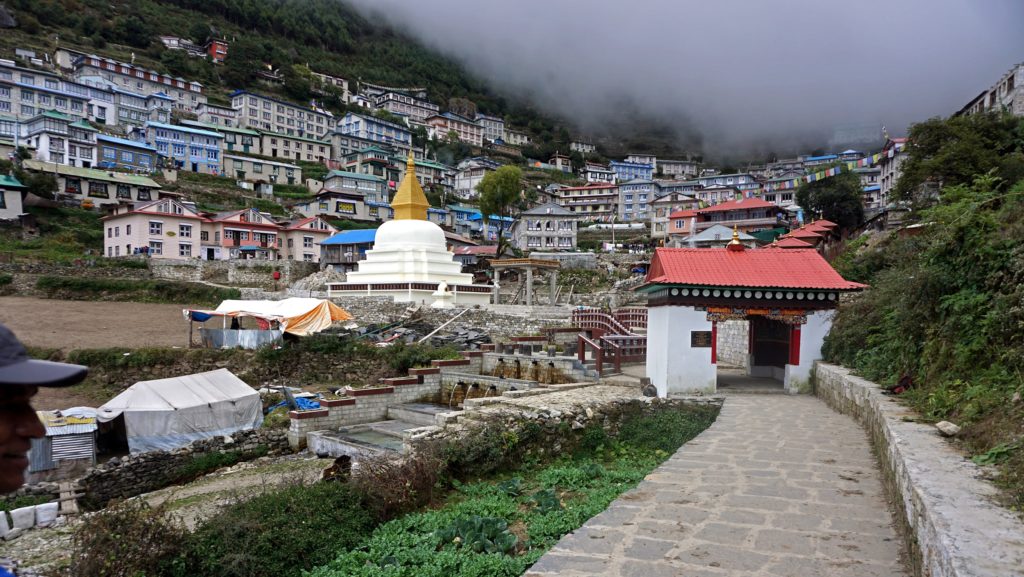
One of the most famous towns in the Everest region, Namche Bazaar is also known as the “Gateway to the Himalayas”. Travelers doing the Everest Base Camp trek spend time at Namche acclimatizing and also exploring the village. A commercial hub of the Khumbu, many of the Sherpas who are into the tourism business hail from Namche. Situated snugly into the side of the mountain, Namche Bazaar resembles a terrace-like topography. Namche Bazaar also used to be the main rendezvous point for Tibetan and Nepali traders in ancient times. Immediately west of Namche lies the Kongdi RI Himal at 6,187 meters (20,299 ft) and to the east is the Thamserku Peak at 6,623 meters. On a hill overlooking Namche Bazaar lays the Syangboche Airport. The town has a number of lodgings and stores catering to the needs of visitors. The popular Everest View Hotel also lies a few distances away from Namche.
Tengboche Monastery
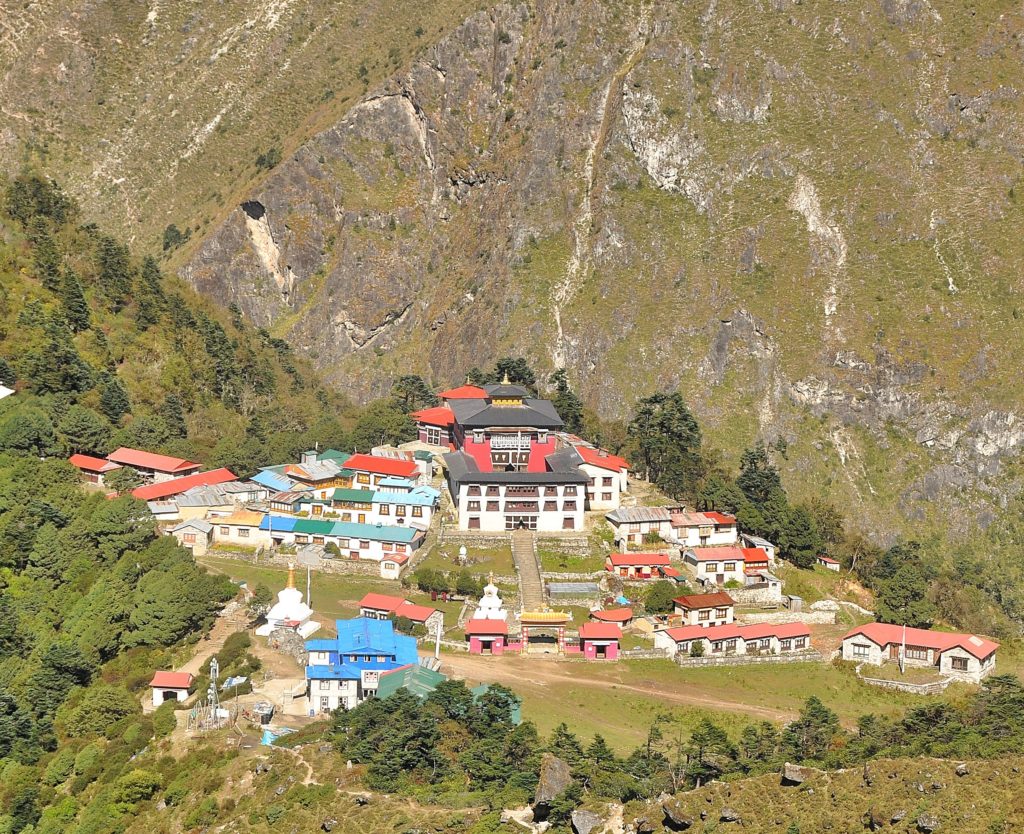
Located at 3,867 meters, Tengboche is another important village in Khumbu. The largest monastery in the region- the Tengboche Monastery also lies in the village. Tengboche offers panoramic views of the Himalayan Mountains, including the well-known peaks of Tawache, Everest, Nuptse, Lhotse, Ama Dablam, and Thamserku. Tengboche is located on a hill at the confluence of the Dudh Koshi and the Imja Khola rivers. The monastery of Tengboche is also strategically placed on the way to Everest Base Camp and thus attracts large number of tourists from all parts of the world. Tengboche and the Tengboche Monastery complex built around the village are also considered the oldest Sherpa celibate monastery in the region. During the spring season, hill slopes around Tengboche are covered with flowering rhododendrons, making for a very beautiful and florescent scene.
Kalapatthar
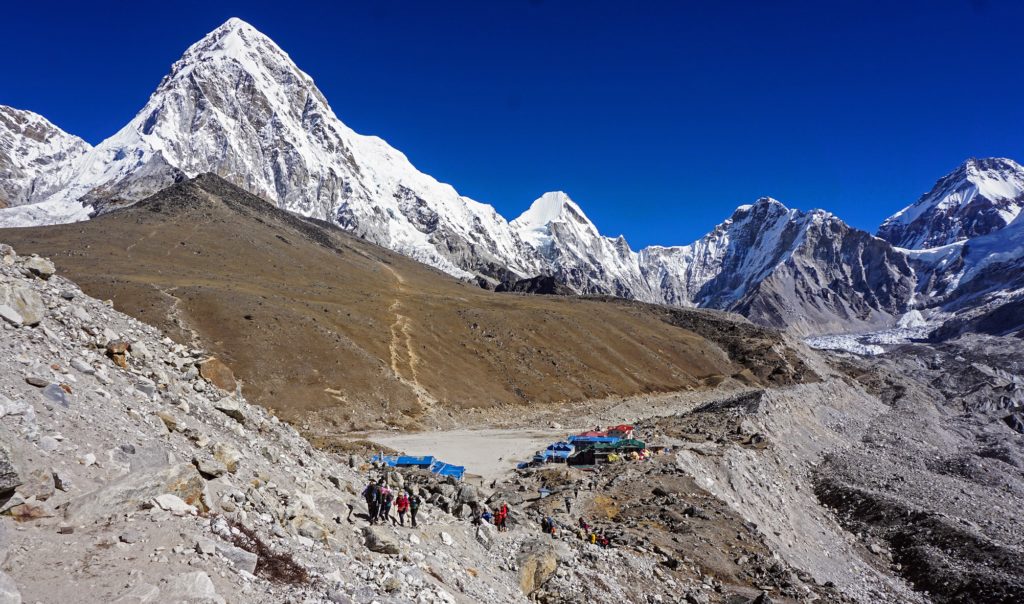
The word “Kalapatthar” translates to “Black Rock” in Nepali and is a notable landmark and vantage point in the Khumbu. Located on the southern ridge of the Pumori above the settlement of Gorekshep, Kalapatthar provides the most accessible close up view of Everest. The views of Everest, Nuptse and Changtse are spectacular from Kalapatthar and there are glimpses of the northern flank and summit of Lhotse as well.
The Annapurna region
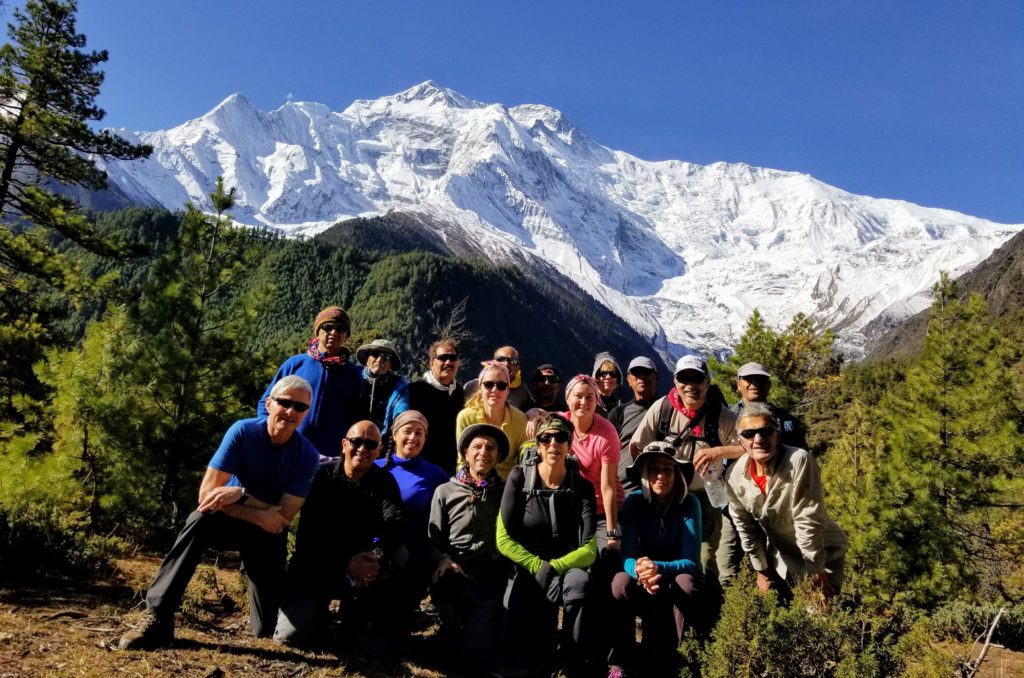
The Annapurna region is second only to the Everest region in terms of popularity. Festooned with gorgeous mountain peaks, the Annapurna region offers trekkers with some of the most beautiful and amazing landscapes in the entire planet. With cities like Pokhara, Annapurna region is also considered as a prime destination for other adventure activities like rock climbing, zip-lining along the hills and paragliding. The region does not lack in various mountain peaks and is filled with water-bodies and many temples. Trekking journeys like the famous Classic Annapurna Circuit Trek take place in the remote locations of the region. The trek rises to an altitude of 5,416m on the Thorung La Pass, touching the edge of the Tibetan plateau. Various Mountain Peaks like the Annapurna Massif (Annapurna I-IV), Dhaulagiri, Machhapuchhre, Manaslu, Gangapurna, Tilicho Peak, Pisang Peak, and Paungda Danda lie in the region, making trekking in Annapurna a wholesome affair. Numerous other peaks of 6000-8000m in elevation rise from the Annapurna range.
Here are some highlights of the Annapurna region-
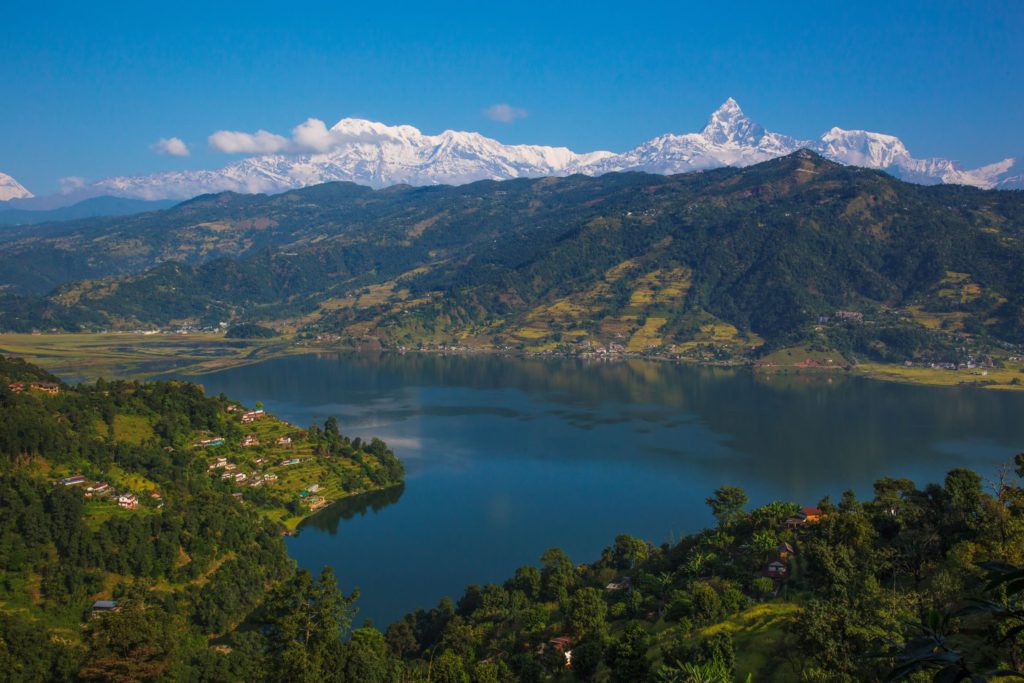
Pokhara
The valley of Pokhara is the second-largest valley in the hilly region of Nepal. Pokhara city is one of the most popular tourist destinations in Nepal. Many tourists visit Pokhara Valley to see the Himalayan range and lakes. Pokhara is also famous for boating, trekking, rafting and extreme sports like rafting, canoeing
and bungee jumping. Pokhara is also famous for its lakes. Among the many lakes in Pokhara Valley, Phewa Lake is the largest. The longest and fastest zip line in the world was built recently in Pokhara; the line is 1850 meter long and begins at the top of the Sarangkot hill and ends near the Yamdi River. Pokhara is often the starting point of many treks in the region as well, like the Annapurna Base camp Trek.
Ghorepani and Poon Hill
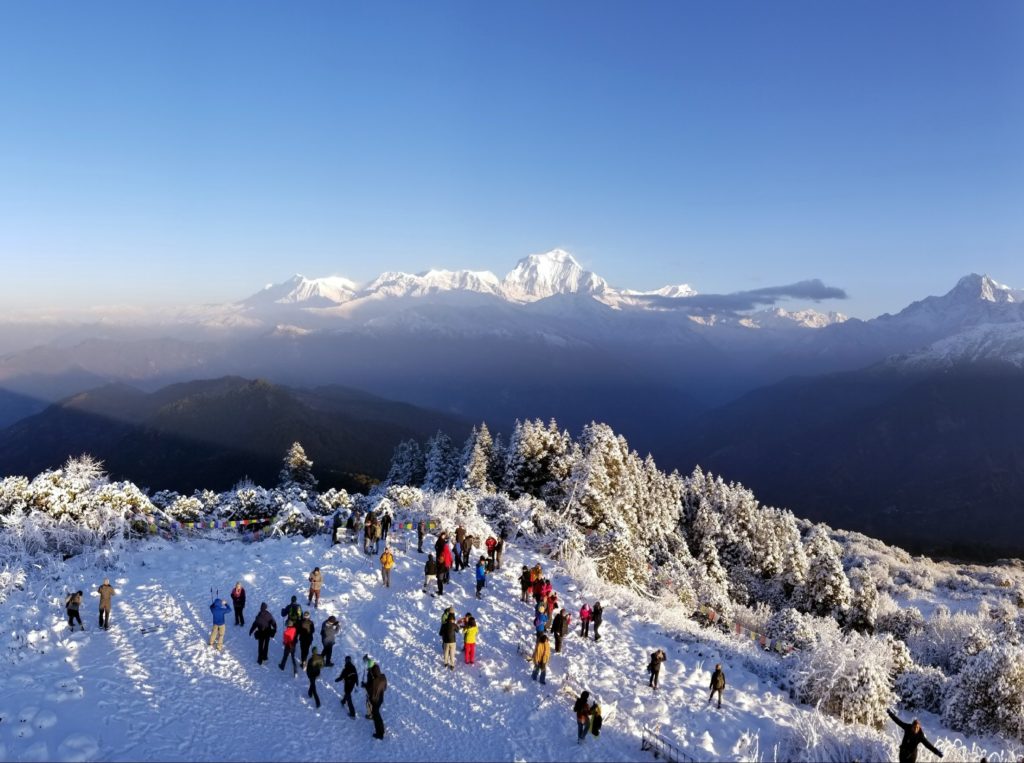
The village of Ghorepani lies within the Annapurna Conservation Area (ACAP) and contains a number of guest houses that provide lodging and meals to mountain trekkers, many of whom spend the night before a pre-dawn trek to the top of nearby Poon Hill (3210m/10531 ft) to watch the sunrise. The place used to be a rest stop where ancient traders found water (“pani” in Nepali) for their horses (“ghora” in Nepali) thus leading to the nomenclature of Ghorepani. Poon Hill is a famous vantage point on the Annapurna region that provides panoramic views of the Annapurna Mountain massif. The vantage point is notoriously popular for its view of the rising sun amidst the mountains, changing the colors of the peaks from snowy white to a burning ember.
The Annapurna Sanctuary
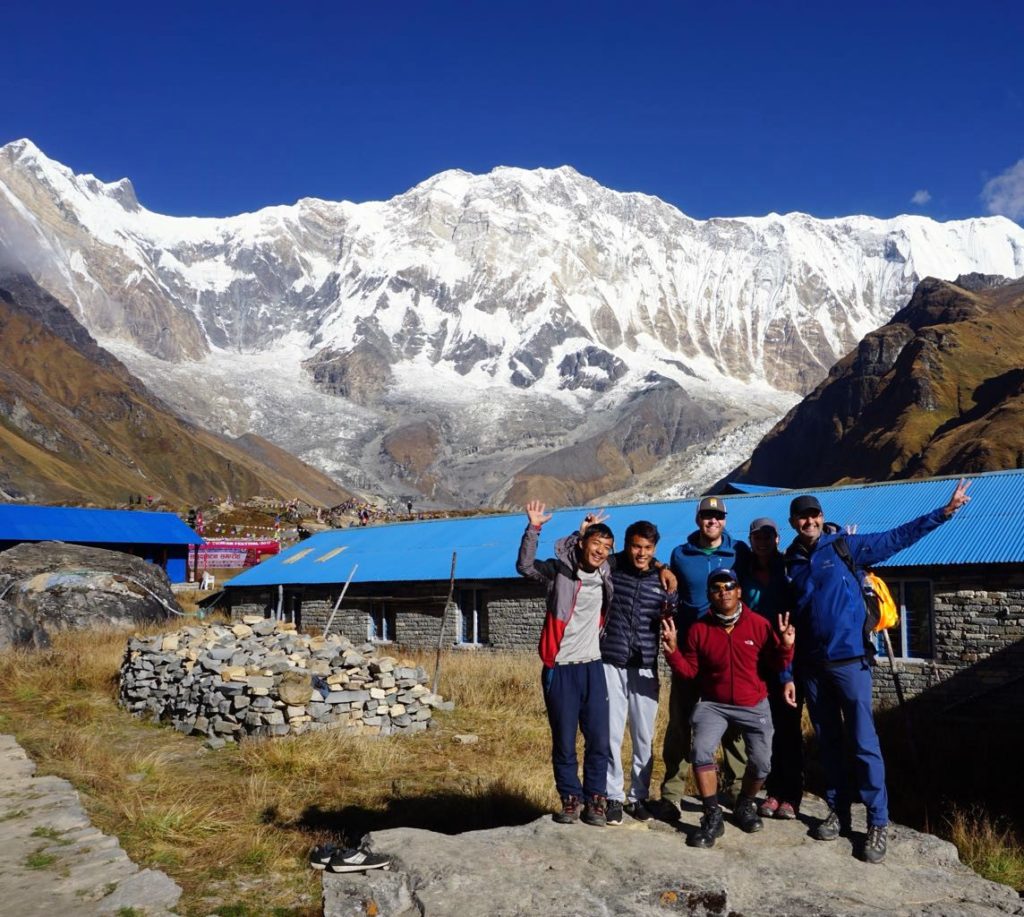
A high glacial basin lying 40 kilometers directly north of Pokhara, the Annapurna Sanctuary is an oval-shaped plateau that sits at an altitude of over 4000 meters, surrounded by a ring of the Annapurna range, most of which are over 7000 meters. The unique combination of heights and depths on the 5-7 day trek into the Annapurna Sanctuary give rise to an extraordinary variety of ecosystems. The entire sanctuary is held sacred by the Gurung people, one of the many native people that inhabit the area. They believe it is the repository of gold and various treasures left by the Nagas- the serpent-gods. The sanctuary is also believed to be the home of several deities from Hinduism and Buddhism, as well as older animistic gods.
Langtang Region
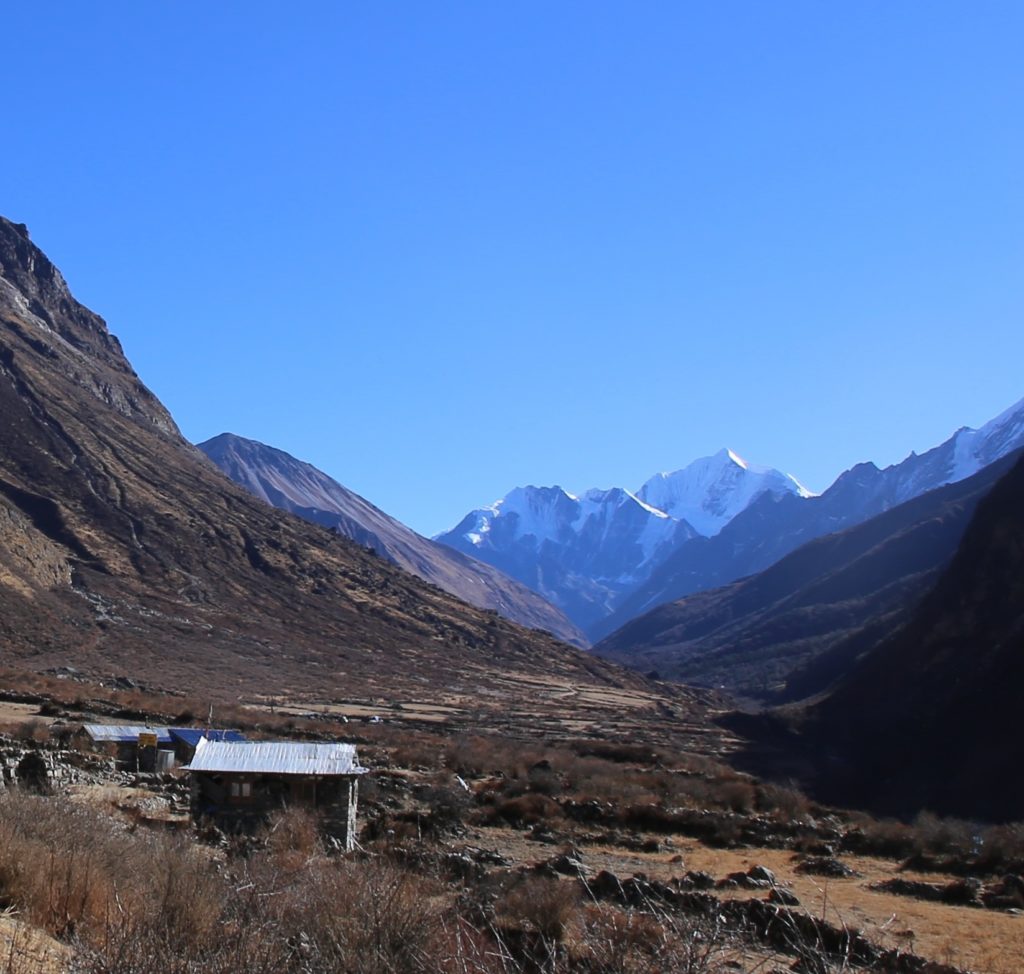
Situated north of the Kathmandu Valley and bordering Tibet, the Langtang Valley in the Langtang region is known as the “Valley of Glaciers”. A beautiful region for trekking, Langtang is famous for its remote locations and ethnic villages that line the trekking trail. Langtang is embedded with wonderful panoramic views of the snowy Himalayas and mesmerizing cerulean glaciers. Rich in traditional villages and settlements of people who follow ancient religious practices and beliefs, trekking in the Langtang region is often an experience where the cultural opulence of the place shines bright. Ancient villages located into the crevasses of the mountains and far-flung secluded settlements make for a trek that is like a journey through another time. The region is also the home of the Langtang Himal range and a major religious monastery called the Kyanjin Gompa also lies in the region.
Here are some highlights of trekking in the Langtang region-
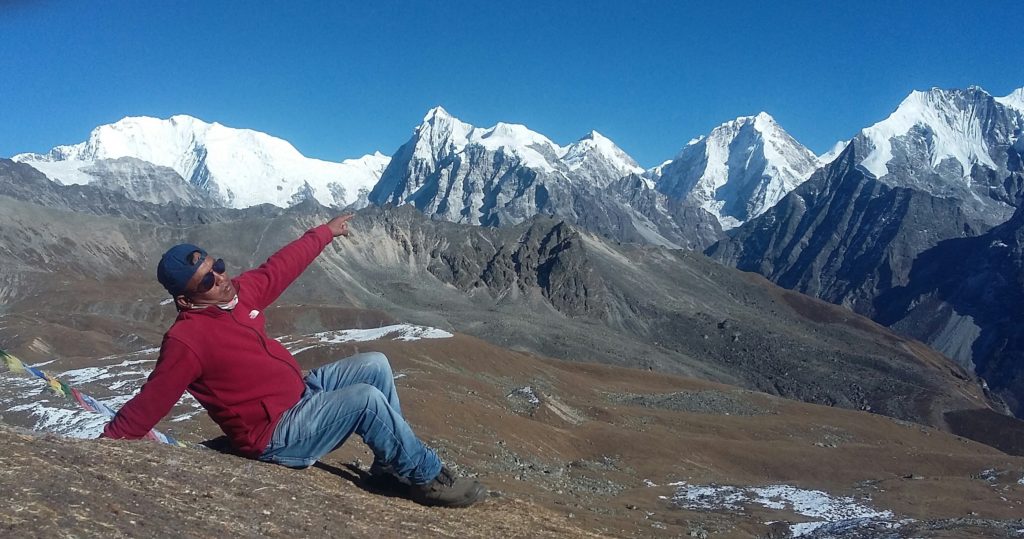
The Langtang Lirung
The Langtang Lirung is the highest peak of the Langtang Himal range and forms the western portion of a complex of mountains which also includes the Jugal Himal- home of Shishapangma. Lying near the Trishuli Gandaki and north of the Langtang Khola, Langtang Lirung is notable for its large vertical relief that lies above the local terrain.
The Langtang National Park
The fourth national park in Nepal established in 1976, Langtang National Park is the first Himalayan national park of the country. It contains the Langtang Lirung within its acreage and has a wide variety of wildlife in its verdant woodlands. The ecosystem of the national park comprises of variety of floral and faunal life and is a beautiful feature of the region that attracts many visitors. Ranging from upper tropical forests to alpine scrubs and perennial ice, the national park consists of many natural wonders. Popular activities for tourists in the park include trekking, climbing and white-water rafting.
The Gosainkunda Lake
An alpine freshwater oligotrophic lake in Langtang National Park, located at an altitude of 4,380 meters, the Gosainkunda Lake melts and sips down to form the Trishuli River. The Gosainkunda area has been delineated as a religious site. Hindu mythology attributes Gosainkunda as the abode of the Hindu deities Shiva and Gauri. The lake’s waters are considered holy and of particular significance during the Gangadashahara and the Janai Purnima festivals when thousands of pilgrims from Nepal and India visit the area. Gosainkunda is believed to have been created by Lord Shiva when he thrust his Trishul (holy Trident) into a mountain to extract its water so that he could cool his stinging throat after he swallowed the poison that was threatening to destroy the world. Gosainkunda is a significant place of interest on the Helambu trekking route.
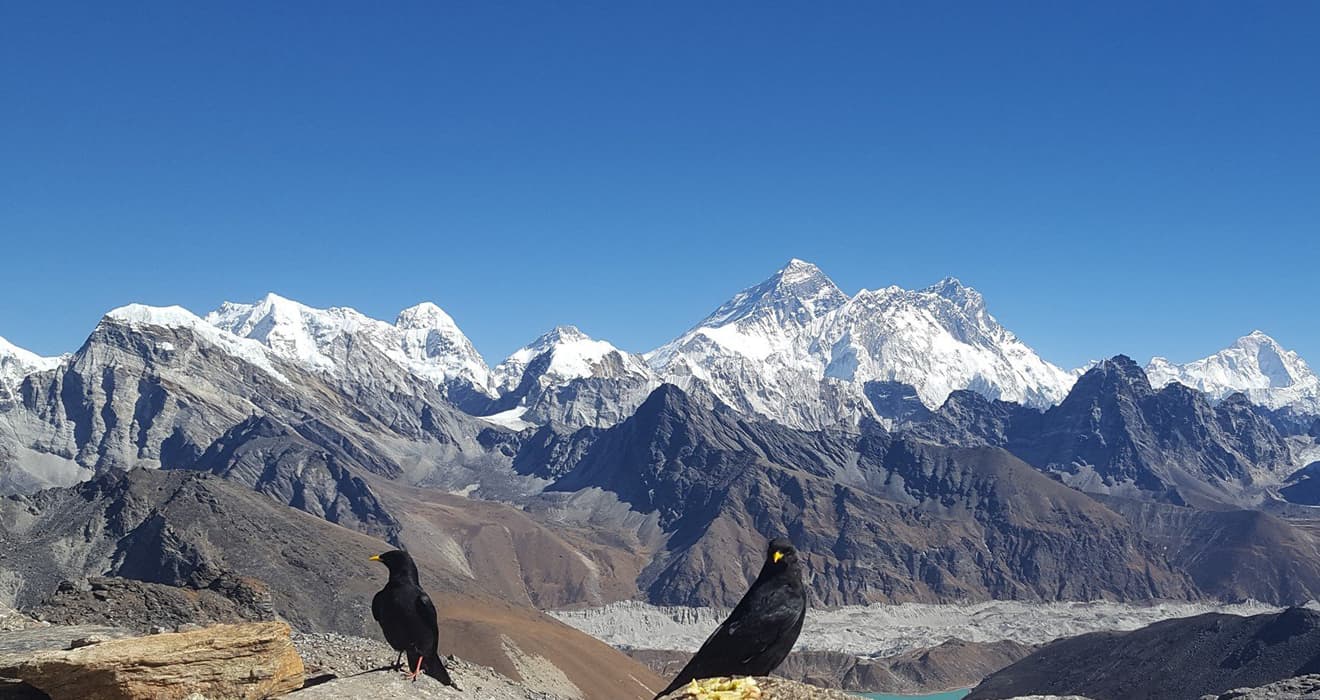
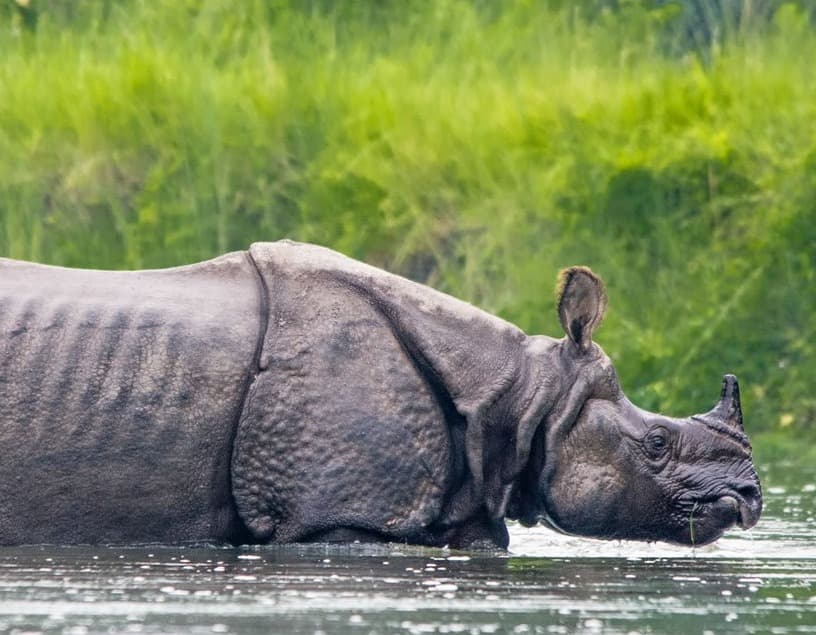
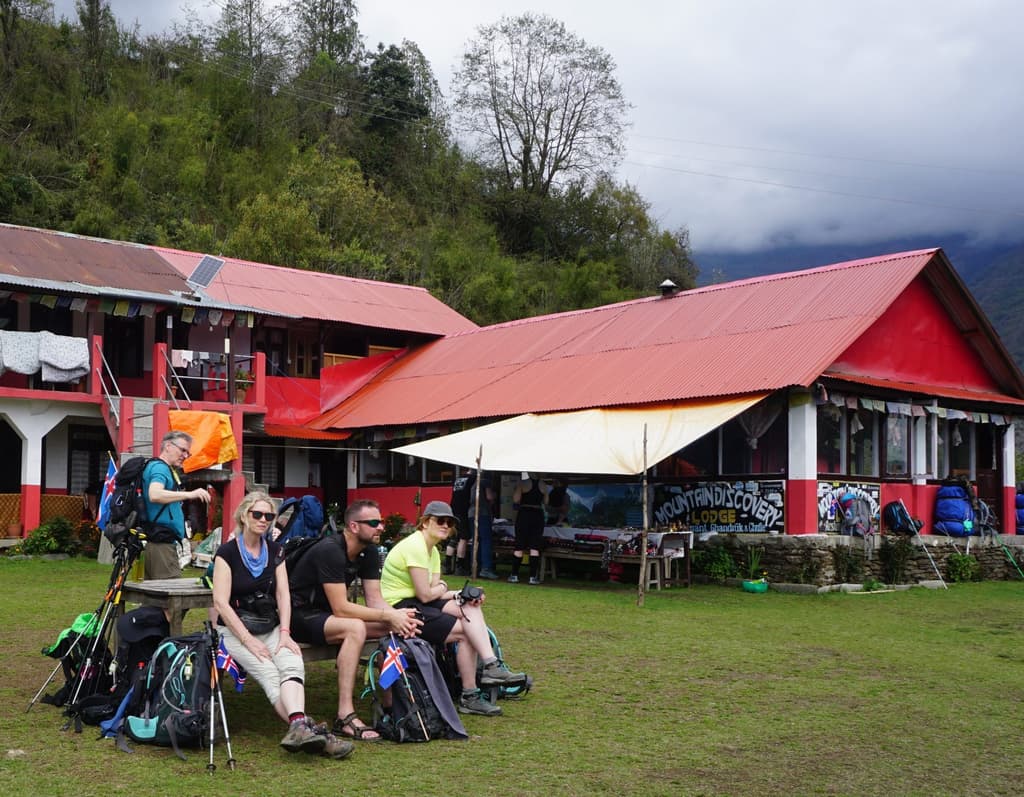
Post a Comment